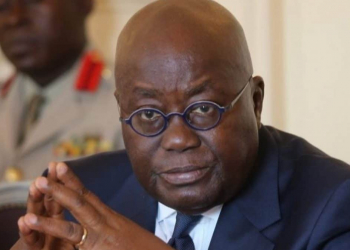The country’s economy last year grew by 3.5 percent, the lowest rate in the past 22 years and the fifth consecutive year of decline, data from the Ghana Statistical Service (GSS) has shown.
Even before the statistical service announced the GDP growth figure, analysts predicted a torrid time for the economy on the back of challenges with oil production at the Jubilee Oil Fields as well as inadequate power generation and supply that lingered last year.
According to the Wednesday’s announcement, industry–which took one of the heaviest impact from the power crisis recorded a negative growth of 1.4 percent while the mining and quarrying sector also recorded a negative 10.7 percent growth.
Government which had entered an International Monetary Fund (IMF) programme in 2015 was expecting to grow the economy by 5.4 percent as at the end of last year but the faulty turret bearing on the FPSO Kwame Nkrumah meant that oil revenue could not come in as expected leading to a slower growth rate.
Despite growth recorded being at a 22-year low, the Nana Addo Dankwa Akufo-Addo-led government is forecasting attaining a 6.3 percent economic growth in its first year of government to overturn the declining economic growth rates.
The Finance Minister wants to achieve the 6.3 percent growth rate notwithstanding the introduction of numerous tax cuts which would see government lose millions of cedis as a result.
But Mr. Ofori-Atta argues that the tax cuts are supposed to stimulate growth and would not necessarily lead to loss of revenue which is expected to rather increase to GH¢44.9 billion which is about 33 percent of the previous year figure.
The Minister is confident that the ambitious revenue mark will be attained due to that innovative measures that will be introduced to enhance revenue collection as well as seal revenue leakages that cost the country millions of cedis.
The economic growth which the IMF during its last Article IV Consultation described as optimistic is expected to be aided by the coming on stream of the Sankofa-Gye-Nyame oil and gas project.
The project is expected to deliver an additional 30,000 barrels of oil per day when it comes on stream middle of this year, adding to production from the Jubilee Fields and the Tweneboa-Enyenra-Ntomme (TEN) — which should be in excess of 120,000 barrels per day.
The fields will also produce 180 million standard cubic feet of gas daily, which is sufficient to generate approximately 1,100 megawatts of electricity.
But the volatility of oil price on the world market has led to some analysts doubting whether the growth target largely hinged on oil production can be attained.
But the Minister insists that government will work hard to attain its growth target while ensuring that its planned programmes such as one district, one factory, Planting for Food and Jobs among others will help create enough jobs that will help stimulate economic growth.
Join GhanaStar.com to receive daily email alerts of breaking news in Ghana. GhanaStar.com is your source for all Ghana News. Get the latest Ghana news, breaking news, sports, politics, entertainment and more about Ghana, Africa and beyond.


